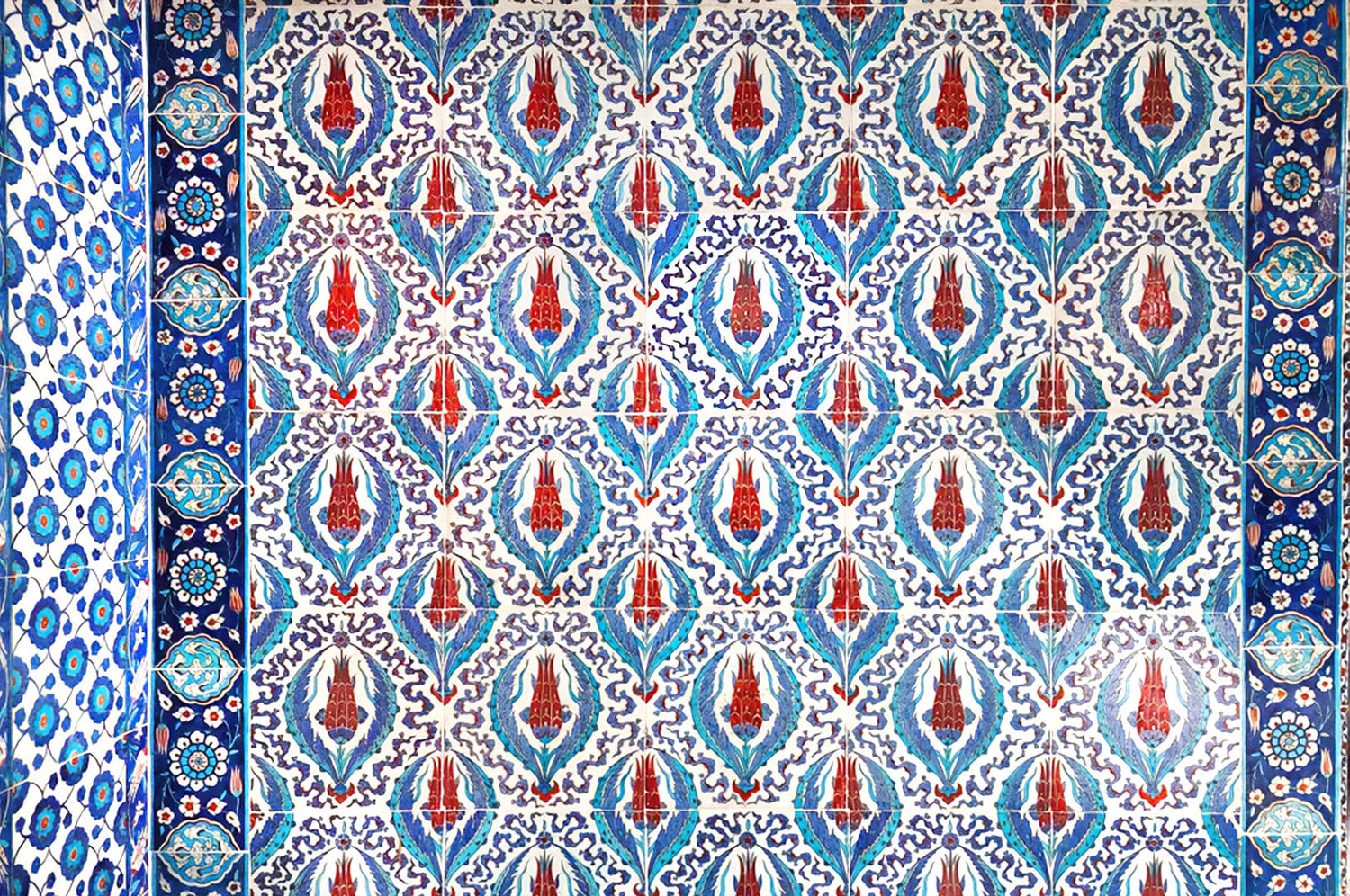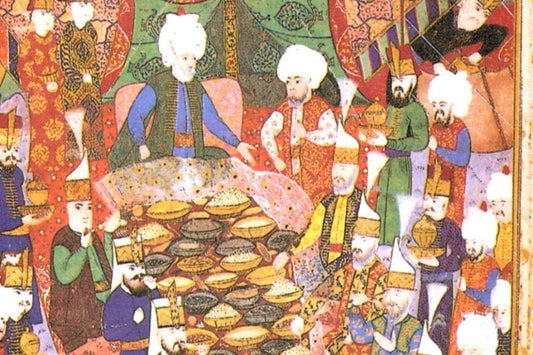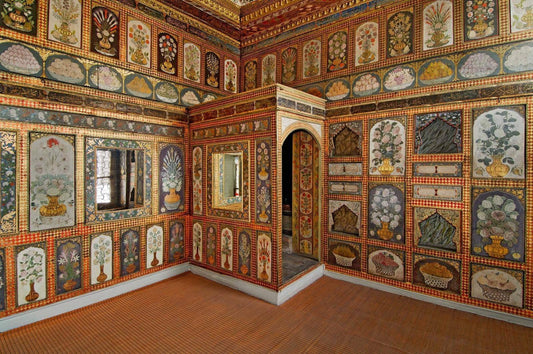The tulip, an elegant symbol of Ottoman art, is a flower deeply rooted in Istanbul and Ottoman culture. In this article, we will examine in detail the place the tulip motif occupied in Ottoman art, its evolution throughout history, and the artistic reflections of this elegant flower.
The Mythological Origin of the Tulip and Its Rise in the Ottoman Empire
According to a story told in Persian mythology, a green leaf struck by lightning caught fire and transformed into a red flower. The black spot in the center of the tulip is believed to be the scar of this lightning strike. Tulip bulbs, believed to have originated in the Tian Shan and Pamir Mountains of Central Asia, accompanied Turks migrating to Anatolia. They were depicted on tiles adorning the walls of Anatolian Seljuk palaces in the 13th century and were celebrated for their color and beauty in Rumi's Masnavi. For centuries, the color red has been emphasized in poetry; the black spot sometimes symbolized heartache, sometimes a mole on a lover's cheek. The references to tulip gardens in poems written by Mehmed the Conqueror under the pen name Avni indicate that this flower was a part of everyday life in the 15th century.
Tulip Cultivation and Garden Culture: The Tulip Period in the Ottoman Empire
The tulip, introduced from its natural habitat to horticultural culture in the 16th century, has been cultivated in a wide variety of colors, patterns, and forms through hybridization. Tulip cultivation in the Ottoman Empire increased among prominent figures in Istanbul in the 16th and 17th centuries, and books describing its cultivation and characteristics were written. It is believed that the tulip was brought to Europe by Busbecq, an ambassador to the Austro-Hungarian Emperor Ferdinand I, during the reign of Suleiman the Magnificent. He recorded the tulip as tulipan in his letters, thus passing into Western languages.
Tulip Motif and Ottoman Art: Iznik Tile Tulip Pattern
Between 1540 and 1566, Kara Memi, the head miniaturist at the palace, decorated the pages and the sultan's signature in a new style, including tulips, for a book collecting the sultan's poems. Kara Memi semi-stylized the tulips, ranging in color from red to navy blue, yellow to orange, showing only three of their petals. Depicted in this new style, which quickly influenced all artists, the tulip acquired a special significance among floral motifs in Ottoman art. Instead of adorning only gardens, tulips began to adorn mosques and mausoleums in tiles, and people in fabrics and embroidery. As the variety of tulips in the gardens increased, the motifs depicted and the compositions designed became more magnificent, as seen in the tiles of the Rüstem Pasha Mosque. For example, this tulip pattern was first used in the Rüstem Pasha Mosque. The coral red, emerald green, cobalt blue and turquoise colors of the flowers blooming in fire on Iznik tiles, whose patterns were prepared in the palace muralist's workshop, are the most dazzling works of classical period Ottoman art.
The Use of the Tulip Motif in Different Fields: The Tulip in Ottoman Architecture and Literature
The tulip has been immortalized in the tiles on the walls of mosques and tombs, in hand-carved decorations, in fabrics and embroidery, in carpets, ceramics, and in the pages of books. Tulip motifs were crafted with great skill and taste in 16th-century Bursa çâtma and Istanbul kemha textiles. The tulip motif's place in literature is conveyed in 16th-century Baki's ghazal with the tulip rhyme and in 18th-century Nedim's poems, in which he equates spring with tulips. When the words Allah and tulip are written in the Arabic alphabet, the same letters (alif, lam, he) are used, so the numerical value of both, using the abjad calculation, is 66. Because the word tulip, read backwards, produces the word crescent, poets referred to the crescent with the phrase "aks-i lale." These meanings have given the tulip a special place in Ottoman social life, cultural, and artistic spheres. The single flower blooming at the tip of a stem rising from a bulb is seen as a reflection of God's unity.
The Place of the Tulip Motif in Ottoman Art in the 18th Century and Its Reflections in Iznik Tiles
In the 18th century, the tulip motifs painted floor-to-ceiling in Ahmed III's Fruit Room within Topkapı Palace, the tulips seen in the vases of public fountains, in the hands of figures in Levni's miniatures, and on tombstones lost their plump appearance, and a new variety of tulips with tapered, pointed petals, known as the "swallow tulip," became popular. No bouquet or vase was painted without this iconic flower of Ottoman art. You can access our Iznik tile panel, inspired by the tulip drawings in Ahmed III's room, here .
The Place of the Tulip Motif in Ottoman Art: An Invitation to Discovery
The tulip, an elegant symbol of Ottoman art, has taken on diverse forms and meanings throughout history, leaving a cultural and aesthetic legacy. The artistic reflections of this unique flower are a reflection of the Ottomans' rich culture and aesthetic. So, how about exploring more about the unique place and beauty of the tulip motif in Ottoman art? Click here to see modern reflections of the tulip motif in our Iznik tile designs and learn more about this unique art form. Own this unique piece of history and art!
Resources
Motif, Turgut Saner, Şebnem Eryavuz and Hülya Bilgi, pp.90-91.




